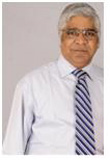 Young doctors all over India breathed a sigh of relief when the Union Health Minister announced that the proposed year of rural service as a pre requisite for post graduate medical education would not be put into action.
Young doctors all over India breathed a sigh of relief when the Union Health Minister announced that the proposed year of rural service as a pre requisite for post graduate medical education would not be put into action.
Although it cannot be denied that there is an acute shortage of healthcare providers in rural India, one has to be pragmatic. Given practical constraints like the absence of supporting infrastructure, compulsory postings would not be viewed enthusiastically. It is also true that a significant portion of rural India now has access to reasonable bandwidth and is internet ready. One has to be innovative and think out of the box. The term jugaad epitomises it all.
We could consider mandatory virtual rural postings (VRP). I would suggest that hours of VRP could be used towards post graduate admissions, but also as part of an evaluation of annual performance for urban assistant surgeons and civil surgeons. A carrot and stick policy with incentives and disincentives is essential. This should be applicable to salaried doctors working in private hospitals in urban areas as well. For the NABH ISO (The National Accreditation Board for Hospitals and The International Organisation for Standardisation) accreditation a minimum of, say, 10 hours of VRP consultations per month from every doctor could be the criteria. For private doctors formal public recognition with an award for every, say, 200 hours of VRP visits could be the attraction.
Contrary to media reports, contributing a few extra hours a week to treating their fellow brethren—from the comfort of their work place or home, but without being paid more—is a privilege that thousands of doctors would agree to. What is required is acceptance of the concept, and then a meticulous working out of the minute details.
Remote diagnosis per se is insufficient. It must be followed up with access to drugs and primary level management. If required, arrangements should be made for further investigations. Less than 20% of those evaluated remotely, however, will require secondary care. Funding for administrative staff, connectivity, and even additional hardware and software would cost far less than physical rural postings.
A valuable by-product would be that tens of thousands of doctors—living in urban areas and using cutting edge technology—would gain an insight into and appreciation of the problems faced by rural people. Constant virtual access to experienced urban specialists will also benefit the rural healthcare provider—be it the PHC doctor, the nurse, or the AYSHA—and may increase their level of competence.
Walter Hugo said, “Nothing can stop an idea whose time has come.” Not everyone may agree with me, but who knows—some day someone, somewhere, may realise that distance today is meaningless and make virtual rural postings a reality.
K Ganapathy is a past president of the Neurological Society of India and the Telemedicine Society of India.
I declare that that I have read and understood the BMJ Group policy on declaration of interests. I have no relevant interests to declare